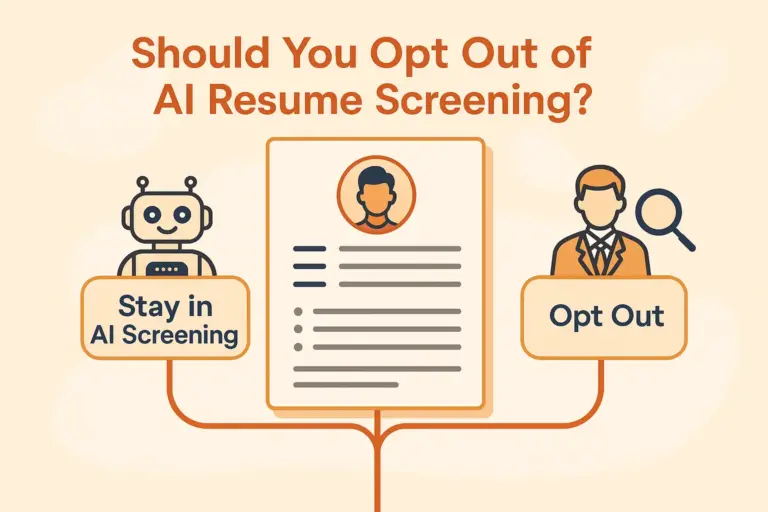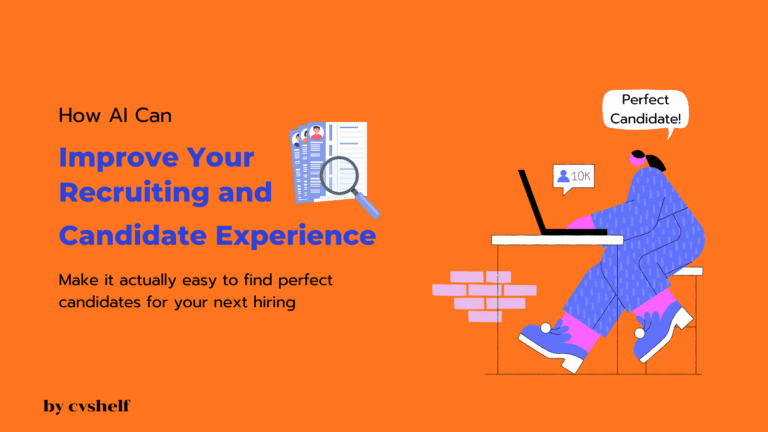A Simple Guide to CV Screening Software for Faster Hiring
Hiring new people can be a lot of work. You get many resumes, called CVs. Reading all of them takes a lot of time. CV screening software helps make this job easier and faster. This guide will explain what this software is. We will talk about how it helps you find the best person for the job. It is a key part of any good hiring plan.
Using technology for hiring is very important today. It helps companies save time and money. Good software can find great workers you might have missed. This helps your company grow. Let’s learn about these helpful tools and how to pick the right one for you.
What Is CV Screening Software?
CV screening software is a computer program. It helps you sort through many job applications quickly. Instead of a person reading every single CV, the software does the first review. This is a big part of modern application management systems. It saves your team many hours of work.
This software is very important for recruiters. It lets them focus on talking to the best candidates. The tool does the boring, repetitive work of filtering. This makes the whole hiring process better and more efficient. A good recruitment platform comparison will show that top companies use these tools to hire faster.
How Does CV Screening Work?
So, how does this technology read a CV? First, the software scans the document. It pulls out key information like skills, work history, and education. This is called parsing. Then, it checks this information against the job description you have. It looks for specific keywords and qualifications.
Modern tools use Artificial Intelligence (AI) to make this even better. They don’t just match words; they understand the context. This leads to a more accurate resume screening tools comparison. They rank candidates from the highest score to the lowest. This helps you see the top applicants right away.
Imagine you have hundreds of resumes. A tool like CVShelf makes this simple. You can drop 100 to 1,000 resumes at once. The AI screens and ranks every single one against your job needs. You get a clean, sorted list. Then you can select the top 100 people and send an email invitation with one click. This all happens while you take a short break. It makes hiring much less stressful.
Key Features to Look For
When you choose a tool, you should look for important features. A good ATS system evaluation will check for these things. The right features make your hiring process smooth and effective. They help you find the best talent without extra work.
- Automated Screening: The tool should automatically read and sort CVs.
- Keyword Matching: It must find candidates who have the skills you need.
- Candidate Ranking: It should show you who the best matches are.
- Easy to Use: The software should be simple and clear for your team.
- Good Integrations: It should work with other tools you use, like BDJOBS.
Comparing Essential Features
Not all software is the same. Some tools offer basic features, while others have advanced AI. Your choice depends on your company’s needs. Here is a simple table to compare different types of applicant tracking system features.
| Feature | Basic Software | Advanced Software (like CVShelf) |
|---|---|---|
| CV Parsing | Yes | Yes, more accurate |
| Keyword Search | Yes | Yes, with context understanding |
| Bulk Upload & Ranking | Limited | Yes, for 1000s of CVs |
| One-Click Emailing | No | Yes |
| AI-Powered Job Descriptions | No | Yes |
Understanding Recruitment Software Pricing
The cost of these tools can be very different. It is important to understand recruitment software pricing before you buy. Some companies charge a monthly fee. This is a subscription model. Others charge you based on how much you use the tool. This is a pay-per-use model.
A great benefit of some modern platforms is their low cost. For example, a service might offer to screen 1,000 resumes for as little as $10. A larger plan for 15,000 resumes could be around $99. Often, sending emails to candidates costs nothing extra. This makes a big recruitment technology investment very affordable for any business. Always check for hidden costs like setup or training fees. For other pricing examples, you can look at platforms like Scrupp.
Pricing Model Comparison
Let’s compare the most common pricing models. This will help you plan your budget for a talent software cost analysis.
| Pricing Model | How It Works | Best For |
|---|---|---|
| Subscription | Fixed fee per month or year. | Companies with constant hiring needs. |
| Pay-Per-Use | Pay for each resume screened or job posted. | Companies that hire less often. |
| Hybrid | A mix of a small fixed fee and usage costs. | Companies with changing hiring needs. |
Is CV Screening Software Worth It? (ROI)
Thinking about the return on investment, or ROI, is smart. The CV screening technology ROI is about the value you get for your money. The main benefit is saving time. Less time spent on reading CVs means more time for important interviews. This helps you hire better people, faster.
Good software also improves the quality of your hires. By finding the best matches, you are more likely to hire someone who stays with the company longer. This reduces costs for hiring again later. The right tool is a smart investment that pays for itself over time.
How to Measure Your ROI
You can measure the success of your new software. Look at a few key numbers before and after you start using the tool. A detailed talent acquisition software comparison should always include how to measure success.
| Metric | What It Means | How Software Helps |
|---|---|---|
| Time to Hire | How long it takes to fill a job. | Reduces this time by speeding up screening. |
| Cost per Hire | The total money spent to hire one person. | Lowers this cost by saving recruiter hours. |
| Quality of Hire | How well a new employee performs. | Improves this by finding better-matched candidates. |
How to Choose the Right Software
The final step is the CV screening software selection. It is important to pick a tool that fits your company. Start by thinking about your needs. How many people do you hire each year? What is your budget?
Next, do your research. Read reviews and compare different resume processing options. Ask for a free trial or a demo. This lets you see how the software works before you buy it. Involve your hiring team in the decision. They will be the ones using it every day, so their opinion is very important.
Tips for a Smart Choice:
- Define Your Needs: Know what problems you want to solve.
- Compare Features: Look at what different tools offer.
- Check Pricing: Make sure the cost fits your budget.
- Ask for a Demo: Try the software before you commit.
- Read User Reviews: Learn from other companies’ experiences.
Conclusion
CV screening software is a powerful tool for any business. It helps you save time, reduce costs, and find the best employees. By automating the first step of hiring, you free up your team to focus on people. This makes the entire process more human and effective.
Choosing the right software is a key decision. We hope this guide helps you understand what to look for. With the right technology, you can build a stronger team and grow your company. A smart recruitment technology investment is an investment in your future.
Frequently Asked Questions (FAQ)
What is CV screening software?
CV screening software is a tool that helps companies by automatically reading and sorting resumes. It makes the hiring process faster by quickly finding qualified people.
Why is this software important?
It is important because it saves a lot of time. It lets recruiters focus on interviewing the best candidates instead of reading hundreds of CVs. This leads to better and faster hiring.
How has this technology changed?
It has changed a lot. It started with simple keyword searching. Now, it uses smart AI to understand skills and experience much better, leading to more accurate results.
What are ATS systems?
ATS stands for Applicant Tracking System. These are bigger systems that manage the whole hiring process. Many ATS systems include CV screening as a key feature.
What are the different pricing models?
The most common models are monthly subscriptions or paying for what you use. Some new tools offer very low prices, like paying a small fee to screen a large batch of resumes.
How do I know if the software is worth the cost?
You can measure its value by tracking things like how much faster you hire people. You can also look at the money saved on recruiter time. If you hire better people who stay longer, that is also a great return.





